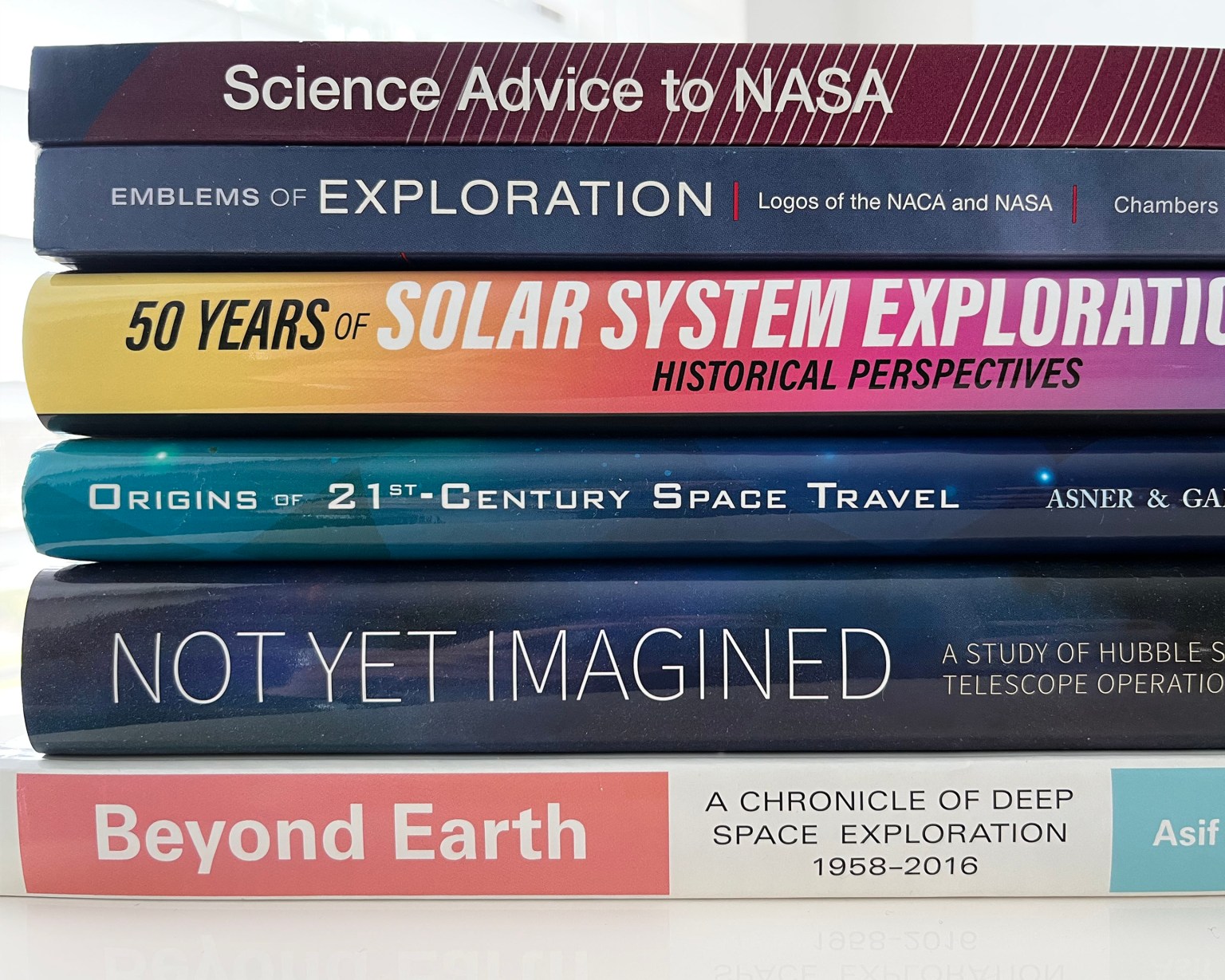[Editorial Note: NASA Office of Program Planning and Evaluation, “Long Range Plan of the National Aeronautics and Space Administration,” December 16, 1959; available in NASA Historical Reference Collection, History Office, NASA Headquarters, Washington, D.C. Page references to original document in brackets.]
Long Range Plan of the National Aeronautics and Space Administration
December 16, 1959
INTRODUCTION [1]
The long term national objectives of the United States in aeronautical and space activities are stated in general terms in the enabling legislation establishing NASA. It is the responsibility of NASA to interpret the legislative language in more specific terms and to assure that the program so generated provides an efficient means of achieving the following objectives expressed in PL 85-568, Sec. 102(c) as:
“The aeronautical and space activities of the United States shall be conducted so as to contribute materially to one or more of the following objectives:
(1) The expansion of human knowledge of phenomena in the atmosphere and space; (2) The improvement of the usefulness, performance, speed, safety, and efficiency of aeronautical and space vehicles; (3) The development and operation of vehicles capable of carrying instruments, equipment, supplies, and living organisms through space; (4) The establishment of long-range studies of the potential benefits to be gained from, the opportunities for, and the problems involved in the utilization of aeronautical and space activities for peaceful and scientific purposes; (5) The preservation of the role of the United States as a leader in aeronautical and space science and technology and in the application thereof to the conduct of peaceful activities within and outside the atmosphere; (6) The making available to agencies directly concerned with national defense of discoveries that have military value or significance, and the furnishing by such agencies, to the civilian [2] agency established to direct and control non-military aeronautical and space activities, of information as to discoveries which have value or significance to that agency; (7) Cooperation by the United States with other nations and groups of nations in work done pursuant to this Act and in the peaceful application of the results thereof; and (8) The most effective utilization of the scientific and engineering resources of the United States, with close cooperation among all interested agencies of the United States, in order to avoid unnecessary duplication of effort, facilities, and equipment.”
In operational terms, these objectives are instructions to explore and to utilize both the atmosphere and the regions outside the earth’s atmosphere for peaceful and scientific purposes, while at the same time providing research support to the Department of Defense. These objectives can be attained only by means of a broad and soundly conceived program of research, development and operations in space. In the long run, such activities should make feasible the manned exploration of the moon and the nearby planets, and this exploration may thus be taken as a long-term goal of NASA activities. To assure steady and rapid progress toward these objectives, a NASA Long Range Plan has been developed and it presented in this document.
In interpreting the Plan, it must be remembered that the implications for the national economy reach far beyond the specific program goals. For example, the space science activities cover the frontiers of almost all the major areas of the physical sciences, and these activities thus provide support of the physical sciences in specific applications in the fields of electronics, materials, propulsion, etc., will contribute, directly or indirectly, to all subsequent military weapons developments and to many unforeseen civilian applications. Reciprocally, the NASA program is provided with [3] support, direct or indirect, from all the related research and development activities outside NASA.
The Plan is presented at a level of effort which corresponds to an efficient and steadily growing capability. The rate of progress could be improved by an increased funding level, primarily by improving the certainty of the timely completion of the many essential engineering developments. On the other hand, a significantly lower scale of funding could be accommodated only by arbitrarily limiting the activities to a narrow line and by greatly reducing the rate of approach to the long term goals. …
NASA MISSION TARGET DATES [9]
1960
- First launching of a Meteorological Satellite
- First launching of a Passive Reflector Communications Satellite.
- First launching of a Scout vehicle.
- First launching of a Thor-Delta vehicle.
- First launching of an Altas-Agena-B vehicle (by the Department of Defense).
- First suborbital flight of an astronaut.
1961
- First launching of a lunar impact vehicle.
- First launching of a lunar impact vehicle.
1961-1962
- Attainment of manned space flight, Project Mercury.
1962
- First launching to the vicinity of Venus and/or Mars.
1963
- First launching of two stage Saturn vehicle.
1963-1964
- First launching of unmanned vehicle for controlled landing on the moon.
- First launching Orbiting Astronomical and Radio Astronomy Observatory.
1964
- First launching of unmanned lunar circumnavigation and return to earth vehicle.
- First reconnaissance of Mars and/or Venus by an unmanned vehicle.
1965-1967
- First launching in a program leading to manned circumlunar flight and to permanent near-earth space station.
Beyond 1970
- Manned flight to the moon. …





























